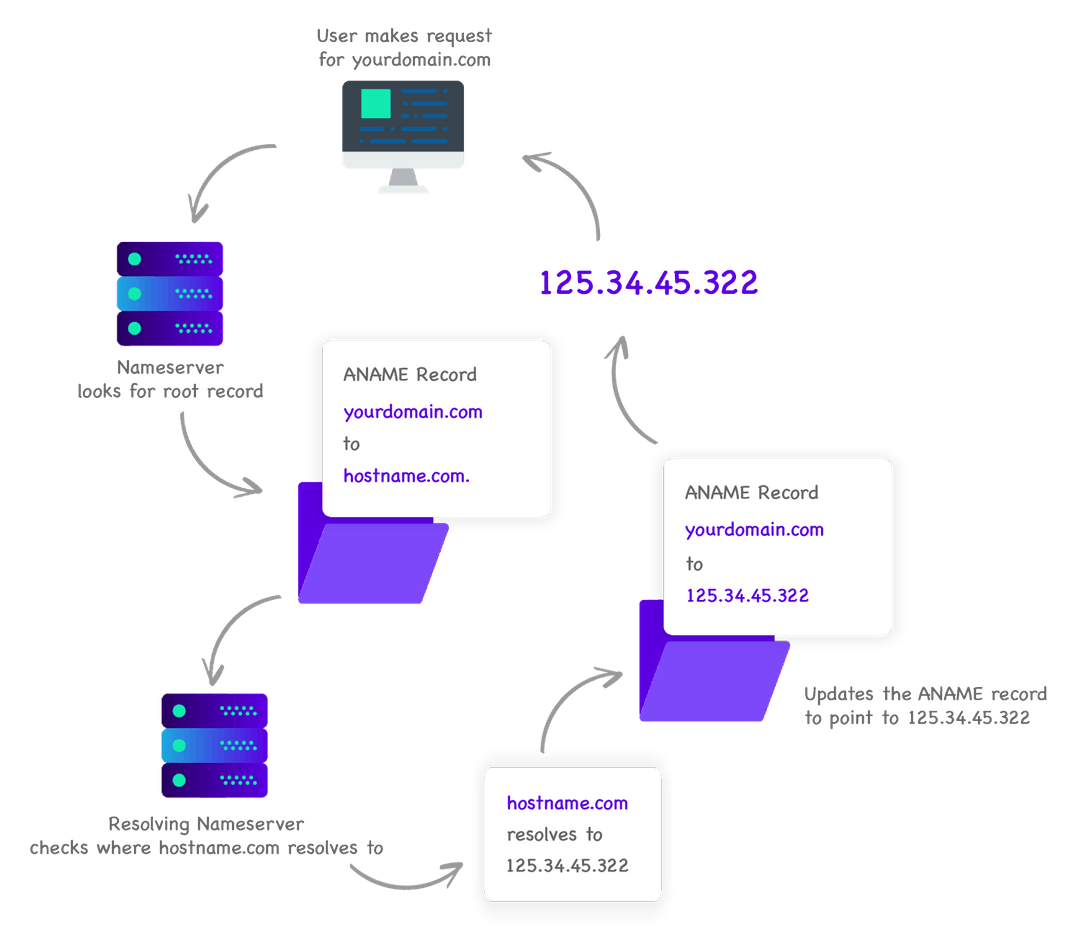
Resources:

Categories:
Book a Free Demo →
Want DNS Freebies?
Give us your email and we'll send you the good stuff.

Categories:
Heather Oliver is a Technical Writer for Constellix and DNS Made Easy, subsidiaries of Tiggee LLC. She’s fascinated by technology and loves adding a little spark to complex topics. Want to connect? Find her on LinkedIn.
https://www.linkedin.com/in/heather-oliver
You’re probably familiar with common DNS records such as A, AAAA, or CNAME records, but what about the mysterious ANAME record? What is it and how does it work? Keep reading for the short and sweet of it.
ANAME DNS Record Explained
An ANAME record is simply a record that functions like a CNAME record, but at the root of your domain. Another way to look at it is like this: if an A record and a CNAME record had a baby, they’d produce an ANAME. This little “bundle of joy” allows you to bypass RFC requirements that limit the functionality of other records without breaking your DNS.
With an ANAME record, you can point the root of your domain to a hostname or fully qualified domain name (FQDN). This record type can be used with any DNS configuration and is an excellent solution for mission-critical systems that are frequently updated and require the most accurate GeoDNS resolution.
ANAMEs are also useful for content delivery networks (CDNs), as they allow for multiple dynamically updated IP addresses to be authoritative for a domain in various regions.

How ANAME Records Work
When an ANAME record is queried, the authoritative nameserver is actually being asked to resolve the host or FQDN stored within the ANAME record. If for some reason the ANAME record can’t be resolved, the most recently cached IP address will be returned instead. This way, you avoid any unnecessary downtime.
ANAME Record Example
Here is a visual example of how an ANAME record works.
constellix.com → FQDN → 127.1.1.1

Whereas an A record only allows you to point the root or subdomain to an IP address (constellix.com → 127.1.1.1) and a CNAME only permits you to point a subdomain to a FQDN (www.constellix.com > FQDN → 127.1.1.1), an ANAME offers the best of both worlds—it behaves like a CNAME, but at the root level.
Did you know?: The creator of DNS Made Easy and Constellix was one of the innovators behind ANAME technology. Before ANAMEs existed, we were using API calls to achieve the same result, and later, developed our own record, which we coined “ANAME Record.”
Not All ANAME Technology is the Same
While ANAME or “alias” records are offered by other DNS providers, there is a distinct difference in the way ANAMEs work at Constellix. Our ANAME records are faster, support EDNS subnet, and have no limitations, which makes our ANAME record the most geo-accurate ANAME technology in the industry.
ANAME Records: A Simple, but Powerful DNS Solution
There are many ways in which you can implement ANAME records into your DNS setup. With this record type, you have more flexibility and freedom to configure your domains exactly how you want them.

Need better DNS?
We can help.
• Configure with ease
• Prevent DDoS attacks
• Monitor your domains
• Optimize site traffic
• Enhance domain performance
• Free POC Account + Demo
BOOK FREE DEMO
Constellix DNS News
Sign up for industry news and insights. It'll be worth it.
Sign up for news and offers from Constellix and DNS Made Easy














